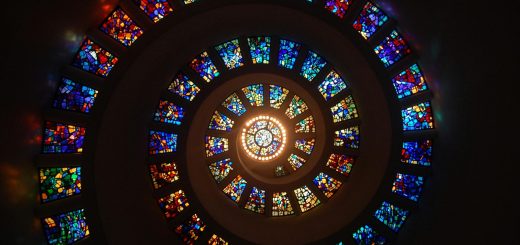The Rise of Mixed-Use Developments in Real Estate

Before diving in, please note: This post is for informational purposes only. If you’d like to know more about how we approach topics, feel free to check out our friendly Disclaimer Page.
Hey there, amazing readers! 🖐️ Just a quick note: yes, we know there are a lot of ads here. Trust us, we get it—it’s not the prettiest look, but they help us keep this blog alive and kicking. Those pesky little ads cover the costs of all the behind-the-scenes magic, from hosting and tech stuff to creating content we hope you’ll love.
We’re committed to delivering quality posts, and your support (even just sticking around despite the ads) means everything to us. So, bear with us, and thanks for helping us keep the good vibes rolling. Now, on to the fun stuff! 😉
TRANSLATE BUTTON AT THE END OF THE ARTICLE
Introduction: The Growing Trend of Mixed-Use Developments
In recent years, mixed-use developments have been gaining popularity in the real estate industry.
These projects bring together residential, commercial, and recreational spaces into a single cohesive environment, creating vibrant communities where people can live, work, and play all in one place.
This trend reflects a shift towards more sustainable urban planning and a desire for greater convenience and efficiency in our daily lives.
Mixed-use developments offer a variety of benefits for both investors and communities, making them an attractive option for developers looking to create dynamic spaces that cater to the needs of modern society.
Definition and Characteristics of Mixed-Use Developments
Mixed-use developments are properties that combine two or more different types of land uses within a single project.
These can include a mix of residential, commercial, retail, office, and entertainment spaces all within close proximity to each other.
The key characteristic of mixed-use developments is their ability to create a sense of place and community by providing a variety of amenities and services in one location.
This integration of different uses allows for increased pedestrian traffic, promotes a more sustainable lifestyle, and fosters a greater sense of community among residents and visitors.
Benefits for Investors and Communities
Mixed-use developments offer a wide range of benefits for both investors and communities.
For investors, these projects provide diversification of risk by combining multiple revenue streams within a single property.
This can lead to higher property values and increased returns on investment.
Additionally, mixed-use developments tend to be more resilient in economic downturns as they are less reliant on any single sector for income.
For communities, mixed-use developments can revitalize neighborhoods, create jobs, and provide a variety of amenities and services that enhance overall quality of life.
These projects promote walkability, reduce traffic congestion, and foster a strong sense of community, making them attractive places to live and work.
Examples of Successful Mixed-Use Projects
Several successful mixed-use developments have transformed neighborhoods and cities around the world.
One notable example is the Hudson Yards development in New York City, which combines residential, commercial, retail, and public spaces in a vibrant urban environment.
Another example is the Santana Row development in San Jose, California, which features a mix of luxury housing, upscale shopping, dining, and entertainment options.
These projects have become popular destinations for residents and visitors alike, showcasing the potential of mixed-use developments to create thriving communities.
Factors Driving the Popularity of Mixed-Use Developments
There are several key factors driving the popularity of mixed-use developments in the real estate industry.
Urbanization and population growth have created a greater demand for housing and amenities in urban areas, leading developers to look for innovative ways to maximize land use.
Changing consumer preferences have also played a role, with people seeking more convenience and accessibility in their daily lives.
Additionally, advancements in technology and transportation have made it easier for people to live and work in close proximity, further fueling the demand for mixed-use developments.
These factors have combined to create a strong market for these projects, driving their continued growth and expansion.
Challenges Faced by Developers in Creating Mixed-Use Projects
While mixed-use developments offer many benefits, they also present unique challenges for developers.
One of the main challenges is the complexity of integrating different types of land uses within a single project.
Developers must navigate zoning regulations, design considerations, and financing challenges to create a cohesive and successful development.
Additionally, managing the diverse needs of residents, tenants, and visitors can be a balancing act, requiring careful planning and coordination.
Despite these challenges, the potential rewards of mixed-use developments make them a worthwhile investment for developers willing to take on the task.
Sustainability and Green Initiatives in Mixed-Use Developments
Sustainability is a key focus in many modern mixed-use developments, with developers incorporating green building practices and environmentally friendly design elements into their projects.
By prioritizing sustainability, developers can reduce their environmental impact, lower operating costs, and attract environmentally conscious tenants and investors.
Green initiatives such as energy-efficient building systems, water conservation measures, and green spaces can not only benefit the environment but also create a healthier and more enjoyable living and working environment for residents and visitors.
Sustainability is increasingly becoming a top priority for developers as they look to create projects that are both profitable and environmentally responsible.
Impact of Mixed-Use Developments on Property Values
Mixed-use developments have been shown to have a positive impact on property values in surrounding areas.
By creating vibrant, walkable communities with a mix of residential, commercial, and retail spaces, these projects can attract a diverse range of residents and businesses, increasing demand for real estate in the area.
This can lead to higher property values, increased rental rates, and a more stable real estate market overall.
Mixed-use developments can also help to revitalize neighborhoods and create a sense of place that attracts residents and visitors alike.
As a result, property values in areas with mixed-use developments tend to see a positive trend over time, making them a sound investment for both developers and property owners.
The Role of Zoning Regulations in Encouraging Mixed-Use Projects
Zoning regulations play a crucial role in the development of mixed-use projects, as they dictate what types of land uses are allowed in a particular area.
In many cases, zoning regulations have historically separated residential, commercial, and industrial uses, making it difficult to create mixed-use developments.
However, cities and municipalities are increasingly recognizing the benefits of mixed-use projects and updating their zoning codes to allow for greater flexibility and creativity in development.
By encouraging mixed-use developments through zoning regulations, cities can create more vibrant and sustainable communities that meet the needs of a diverse population.
This shift towards more flexible zoning regulations has helped to spur the growth of mixed-use developments in urban areas around the world.
Future Trends in Mixed-Use Development
The future of mixed-use development looks promising, with several key trends shaping the industry.
One trend is the continued focus on sustainability and green building practices, as developers look to create projects that are environmentally friendly and energy-efficient.
Another trend is the integration of technology into mixed-use developments, with smart buildings and interconnected systems becoming more common.
Additionally, there is a growing emphasis on creating inclusive and diverse communities within mixed-use projects, with a focus on accessibility, affordability, and social equity.
These trends are likely to drive the continued growth and evolution of mixed-use developments in the years to come, making them a key component of urban planning and real estate development.
Case Studies: How Mixed-Use Developments are Transforming Neighborhoods
One example of how mixed-use developments are transforming neighborhoods is the CityCenterDC project in Washington, D.C.
This mixed-use development combines luxury residences, upscale retail, dining, and office spaces in a pedestrian-friendly environment.
CityCenterDC has revitalized the downtown area, attracting residents, workers, and visitors to its vibrant streets and public spaces.
Another example is the Pearl District in Portland, Oregon, which has been transformed from a former industrial area into a thriving mixed-use neighborhood.
The Pearl District features a mix of residential lofts, art galleries, restaurants, and green spaces, creating a dynamic and diverse community.
These case studies demonstrate the positive impact that mixed-use developments can have on neighborhoods, enhancing quality of life and creating vibrant urban environments.
Conclusion: The Promising Future of Mixed-Use Developments in Real Estate
In conclusion, mixed-use developments are a growing trend in the real estate industry, offering a range of benefits for investors and communities alike.
These projects bring together residential, commercial, and recreational spaces in a single cohesive environment, creating vibrant communities where people can live, work, and play all in one place.
While developers face challenges in creating mixed-use projects, the potential rewards make them a worthwhile investment.
With a focus on sustainability, green initiatives, and inclusive design, mixed-use developments are shaping the future of urban planning and real estate development.
As cities continue to grow and evolve, mixed-use projects will play an increasingly important role in creating dynamic, sustainable, and livable communities for generations to come.

The Enlightenment Journey is a remarkable collection of writings authored by a distinguished group of experts in the fields of spirituality, new age, and esoteric knowledge.
This anthology features a diverse assembly of well-experienced authors who bring their profound insights and credible perspectives to the forefront.
Each contributor possesses a wealth of knowledge and wisdom, making them authorities in their respective domains.
Together, they offer readers a transformative journey into the realms of spiritual growth, self-discovery, and esoteric enlightenment.
The Enlightenment Journey is a testament to the collective expertise of these luminaries, providing readers with a rich tapestry of ideas and information to illuminate their spiritual path.
Our Diverse Expertise 🌟
While our primary focus is on spirituality and esotericism, we are equally passionate about exploring a wide range of other topics and niches 🌍📚. Our experienced team is dedicated to delivering high-quality, informative content across various subjects ✨.
To ensure we provide the most accurate and valuable insights, we collaborate with trusted experts in their respective domains 🧑🏫👩🏫. This allows us to offer well-rounded perspectives and knowledge to our readers.
Our blog originally focused on spirituality and metaphysics, but we’ve since expanded to cover a wide range of niches. Don’t worry—we continue to publish a lot of articles on spirituality! Frequently visit our blog to explore our diverse content and stay tuned for more insightful reads.





